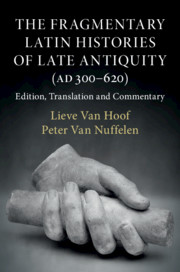Out soon, the Festschrift for Giovanni Cupaiuolo, edited by Silvia Condorelli and Marco Onorato and published by Paolo Loffredo, presents a rich harvest of Sidonius papers:
Condorelli, Silvia, ‘La lettera 9.11 di Sidonio Apollinare a Lupo di Troyes: luci e ombre di una excusatio epistolare’
Di Stefano, Anita, ‘Commentarios in Apollinarem petis. L’epistola prefatoria di Giovan Battista Pio all’edizione sidoniana del 1498′
Fera, Vincenzo, ‘Un fantasma petrarchesco: Sidonio il temerario’
Foscarini, Sergio, ‘Una pista lessicale nella prosa di Sidonio Apollinare: i grecismi’
Santoro, Rosa, ‘Valenze letterarie e metaletterarie del cibo nell’opera di Sidonio Apollinare. II. Dal mito al rito. Il pasto dell’“altro” tra tradizione letteraria e scienza medica’
and also:
Santelia, Stefania, ‘Intramontabili deliciae thermarum: versi dalla tarda antichità latina’










